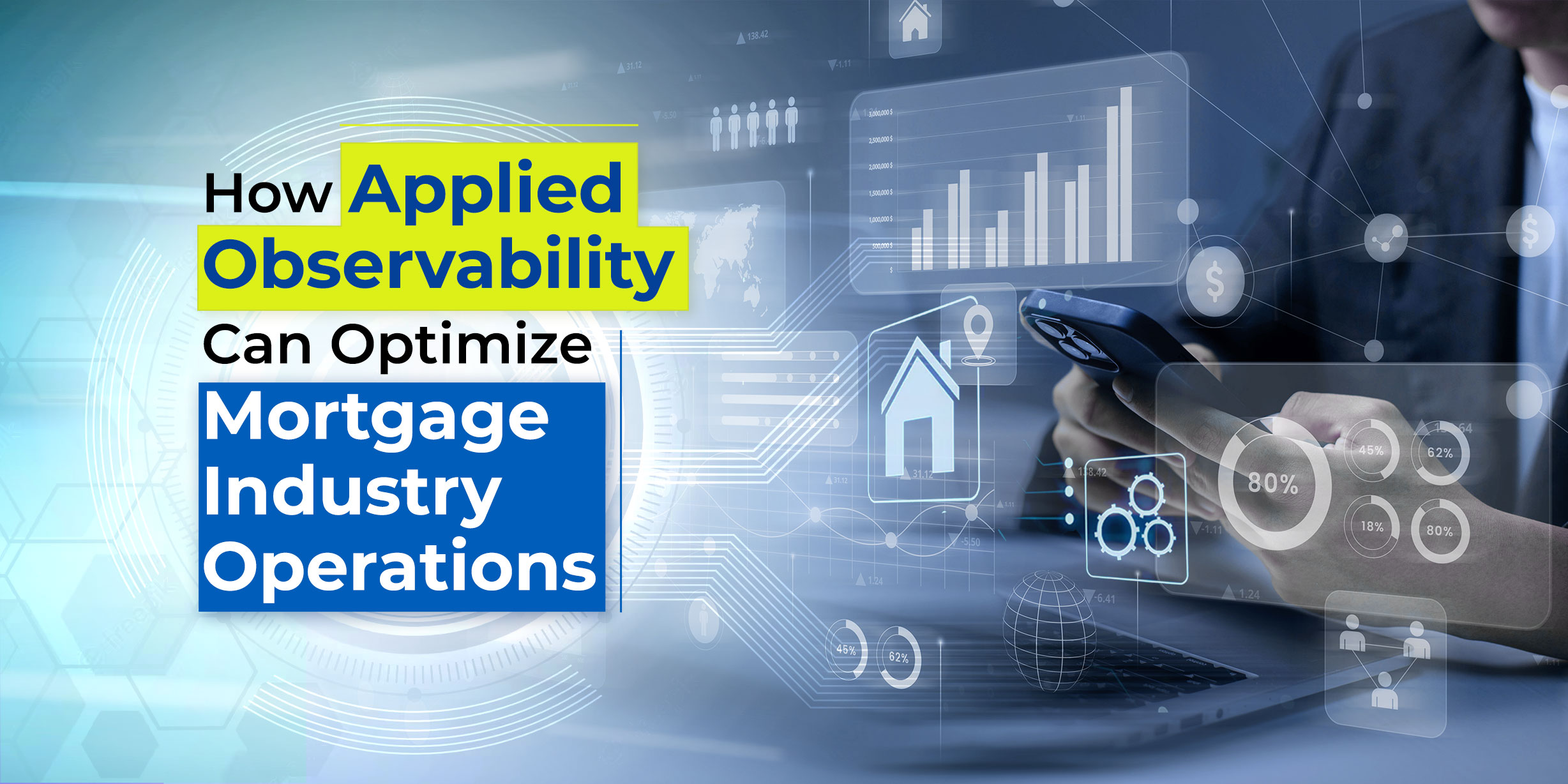Applied observability is one of the top strategic technology trends for 2023, as per Gartner. The analyst firm suggests that it can have a significant impact across different horizontals and verticals, including the mortgage industry. The concept extends the existing IT term observability and applies it to other areas of business, such as security, network monitoring, infrastructure management, etc.
As lenders and mortgage servicing companies invest more and more in digital, applied observability can help unlock the expected returns. This is particularly true given today’s state of data deluge, where mortgage industry stakeholders struggle to identify the exact data sets they need for decision-making amid the white noise.
See More: What Can Mortgage Lenders and Servicers Learn from 2022? 5 Top Insights
What is Applied Observability in Mortgage?
Gartner defines applied observability as “the applied use of observable data in a highly orchestrated and integrated approach across business functions, applications, and infrastructure and operations teams.” You can think of it as a mature form of business intelligence, where data collection and analysis does not happen in silos. Also, unlike regular intelligence, applied observability is not reactive.
It aims to constantly monitor machine data such as events, logs, metrics, and traces, as well as business data generated by transactional systems (for example, a loan origination system or LOS in the mortgage industry) to find insights you can use right now. The goal is to make near-real-time adjustments to your operations and stay a step ahead of potential errors.
What Does Applied Observability Comprise?
Applied observability, in the mortgage industry, or elsewhere, will include the following:
- Data: A key tenet of applied observability is data-driven decision-making. The interval between data generation and action is very little. For example, if a mortgage platform’s users run into problems when managing documents, the provider will immediately update the business rules so that the mortgage document indexing process happens more smoothly. To achieve this, the provider needs access to usage data in real time.
- Infrastructure: Today, digital infrastructure in the mortgage industry is getting increasingly complex, and applied observability can help optimize it. For example, a mortgage servicing company may use multiple APIs and cloud-based relational databases to find, retrieve, and work on borrower information. Applied observability helps gather and act on data across components in your network, endpoint ecosystem, communication environment, and the cloud.
- Third-party observability: Another key factor that sets this concept apart from existing observability systems is third-party coverage. It will give you insights into open-source systems, connected databases, APIs, any partner services, and so on. For example, if you are working with an offshore mortgage outsourcing partner, applied observability will cover that as well.
- Security: Traditionally, security and IT teams work in silos, with some exchange of data and collaboration on ops. Applied observability brings cybersecurity into the same realm as other types of operations optimization, which is important given the rising incidence of security threats in the mortgage industry.
- Business/product decisions: This is one of the tenets of applied observability that makes it so relevant to the mortgage industry. It entails that you constantly monitor and collect data around product use, adoption, engagement, and bottlenecks, to make better decisions. For example, if you have a digital lending platform, applied observability will help you tweak, optimize, and perfect its backend functions to provide the best possible user experience.
See More: What Should be a Mortgage Business’ Roadmap to Success in 2023?
What is Giving Rise to Applied Observability in the Mortgage Industry?
Applied observability is a highly relevant trend for the mortgage industry in 2023, because of three reasons.
First, there is widely democratized access to computing resources, which has led to greater data generation and data use. Cloud-based databases have also contributed to this by removing the need to build your own server racks. Second, changing customer behavior has also made a difference. For instance, 7 out of 10 borrowers, across age groups, are ready to share their income and asset data with lenders and mortgage servicing providers in exchange for speed and convenience.
Finally, the mortgage industry is now increasingly more digital to keep up with changing market conditions (e.g., the pandemic), as well as customer expectations. Several lenders today would qualify as technology companies due to the sheer size of their infrastructure and close partnerships with digital service providers.
Utilizing Observability to Optimize Your Mortgage Operations
The first step towards implementing applied observability is refurbishing your data systems. Typically, centralized infrastructure like a data fabric, warehouse, or lake is the ideal foundation for ingesting and processing information in real time. Along with this, you also need dashboards and visualizations to deliver actionable insights at the right time. Finally, you need to know precisely which business problems you are looking to solve.
For example, in a process-intensive sector like financial services, mortgage document indexing can be a complicated workflow, prone to errors. Through applied observability, you can not only digitize document systems but also make sure they function smoothly.
At Nexval, we work with leading mortgage businesses to help transform operations using the latest technologies and digital frameworks. Our tailored solutions – powered by a team of 1000+ mortgage industry SMEs – can reduce your in-house effort in keeping up with the latest mortgage industry trends and market opportunities.
Talk to our Tech Gurus today, to learn more.


